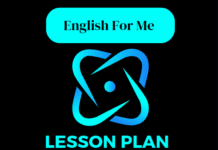Figures of Speech Overview
A figure of speech is a literary device that uses language in a creative and non-literal way to convey meaning, evoke emotion, or add emphasis. Here are some common figures of speech:
Metaphor: A figure of speech that describes a subject by asserting that it is, on some point of comparison, the same as another otherwise unrelated object. For example, “Life is a journey.”
Simile: A figure of speech that uses the words “like” or “as” to describe something by comparing it to something else. For example, “She sings like an angel.”
Hyperbole: An exaggeration used for emphasis or effect. For example, “I’ve told you a million times.”
Personification: A figure of speech in which non-human objects or abstract concepts are given human qualities or abilities. For example, “The wind howled in anger.”
Idiom: An expression whose meaning cannot be inferred from the literal definition of the words that make it up. For example, “It’s raining cats and dogs.”
Alliteration: The repetition of the same sound at the beginning of two or more words in a phrase or sentence. For example, “Sally sells Seashells by the Seashore.”
Onomatopoeia: A word that imitates the sound it represents. For example, “Buzz,” “Hiss,” and “Bang.”
These are just a few examples of the many figures of speech used in language and literature to add depth and interest to communication.
Irony: A figure of speech in which the intended meaning is opposite to the literal or usual meaning of the words used. For example, “Oh great, just what I needed, another broken down car.”
Synecdoche: A figure of speech in which a part of something is used to refer to the whole, or vice versa. For example, “All hands on deck.”
Antithesis: A figure of speech in which contrasting ideas are juxtaposed in a balanced or parallel way. For example, “Ask not what your country can do for you, ask what you can do for your country.”
Chiasmus: A figure of speech in which the order of two parallel clauses is inverted. For example, “Not all who wander are lost.”
Litotes: A figure of speech in which an affirmation is expressed by negating its opposite. For example, “It’s not the worst movie I’ve ever seen.”
Rhetorical question: A question asked for effect, not for an answer. For example, “Why bother?”
Assonance: The repetition of vowel sounds within a phrase or sentence. For example, “I saw a sea serpent slide into the sea.”
Consonance: The repetition of consonant sounds within a phrase or sentence. For example, “Big bugs bite better than bony birds.”
These figures of speech can add depth, nuance, and interest to language, making communication more effective and memorable.






